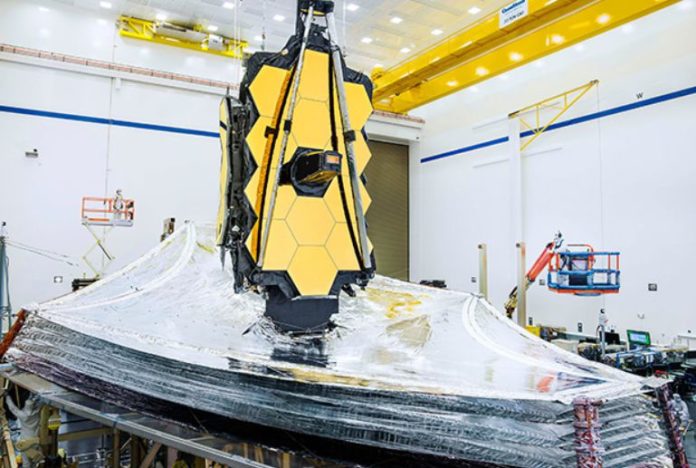NASA experts successfully tested the heat shield of the James Webb Space Telescope, all five layers of which were deployed in the correct position. Next in line are the final tests of the entire telescope and bringing it into flight configuration. The launch of the observatory into space is scheduled for March 30, 2021.
The James Webb Space Telescope will conduct observations in the near and middle infrared range of the electromagnetic spectrum, being in a halo orbit around the second Lagrange point. Its main mirror, consisting of 18 segments, has an area of 25 square meters, which is five times the area of the main Hubble mirror. The scientific tasks of the telescope will be very different, it will observe objects in the early Universe and the era of reionization, as well as exoplanets and circumstellar disks.
The launch date of the telescope into space has been repeatedly postponed due to various difficulties, now the launch is scheduled for March 30, 2021. In the second half of 2018, it was conducted communications tests and start testing the two main parts of the telescope alone and was August 30 completed the assembly of the telescope.
One of the most important parts of James Webb is a deployable heat shield designed to protect the observatory’s mirrors and scientific instruments from heat and radiation fluxes, especially from the Sun. It consists of five thin layers of Kapton, each layer has a coating of aluminium to increase its reflectivity, and the first two layers also have a coating of doped silicon, to protect against intense ultraviolet radiation from the sun. Simulations show that the maximum temperature of the outer layer facing the Sun will be 383 kelvins, and the temperature of the coldest, the last layer will be 36 kelvins.
In mid-October, engineers conducted tests for the deployment of all layers of a heat shield, under conditions simulating weightlessness, which ended successfully. This means that the screen was not affected by a variety of tests that were conducted previously. Now the screen will be folded in the flight configuration to fit under the rocket fairing, and then the telescope will undergo comprehensive electrical and vibration tests, after which the final test deployment of the telescope and the final work on its placement in the flight configuration will be carried out before sending it to the spaceport.
